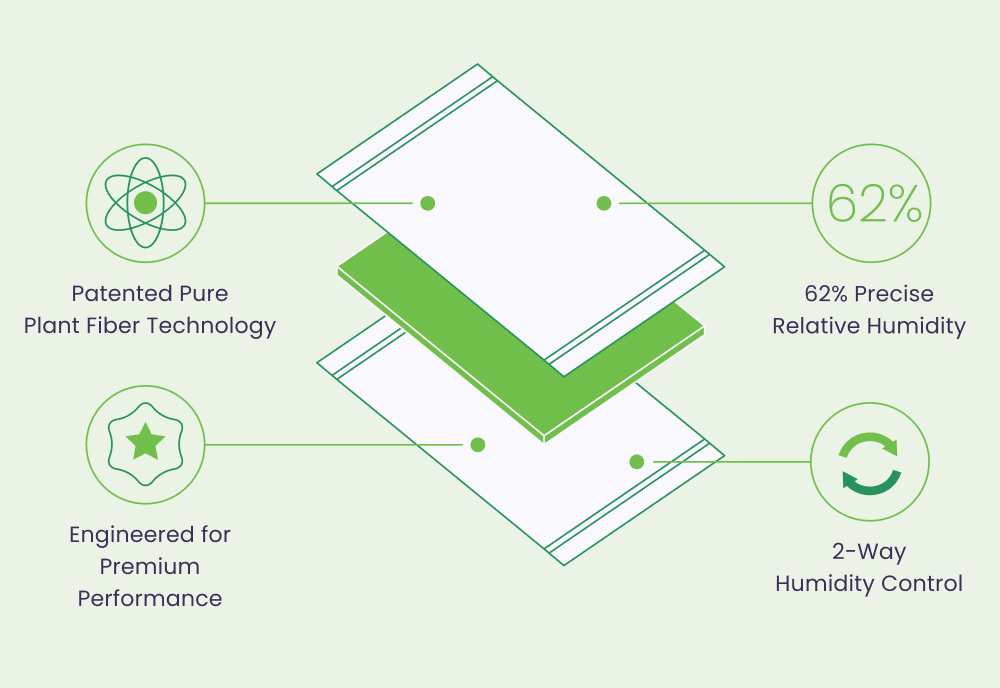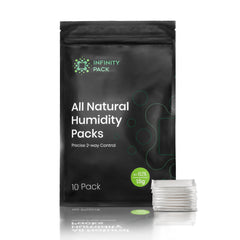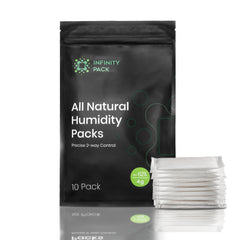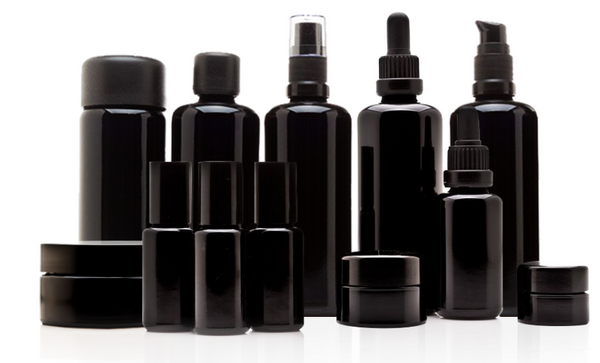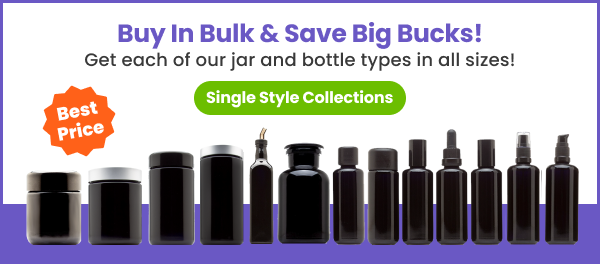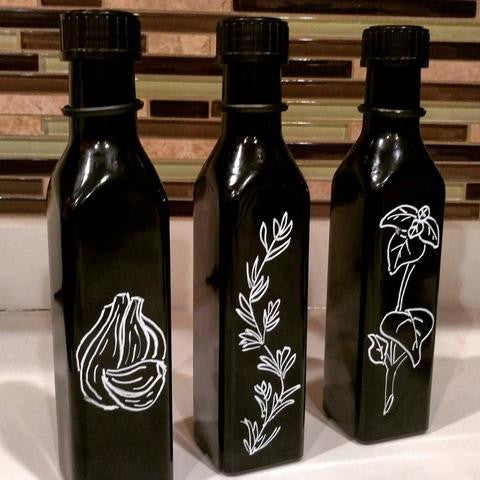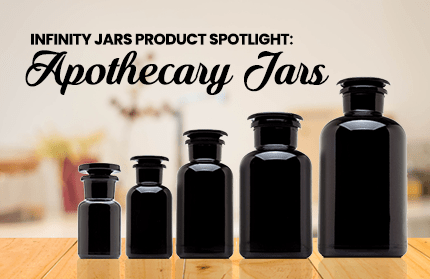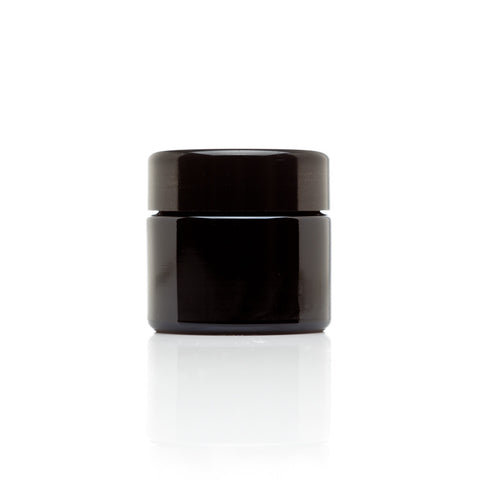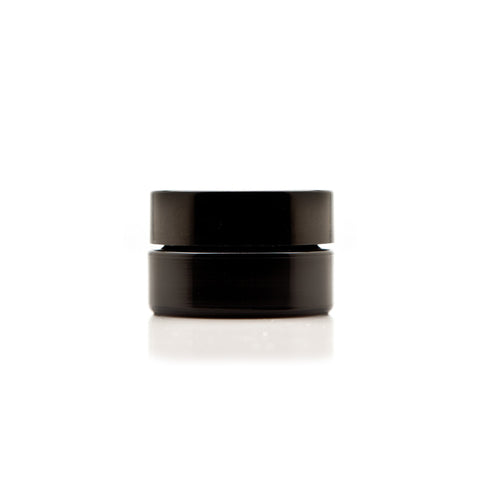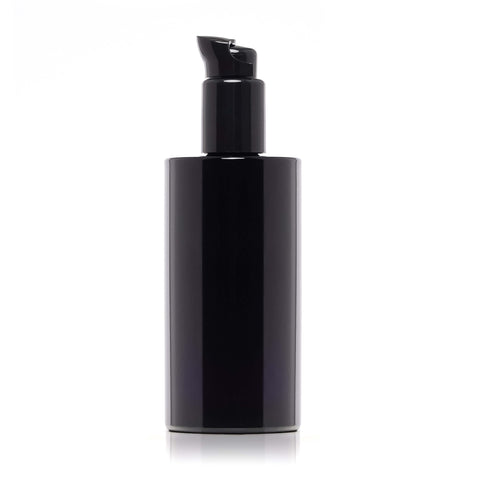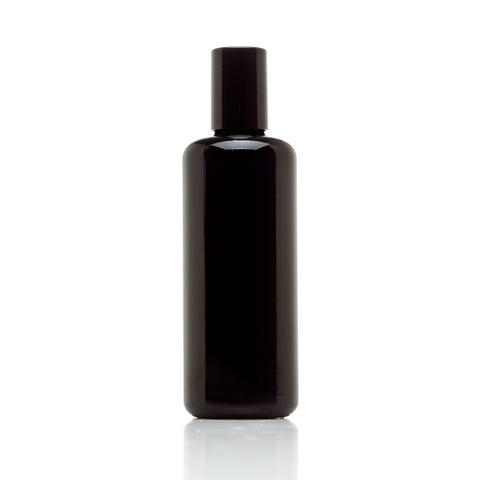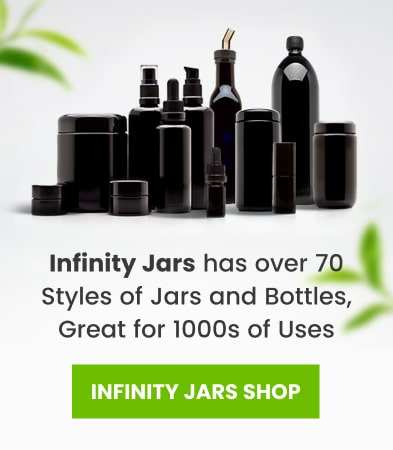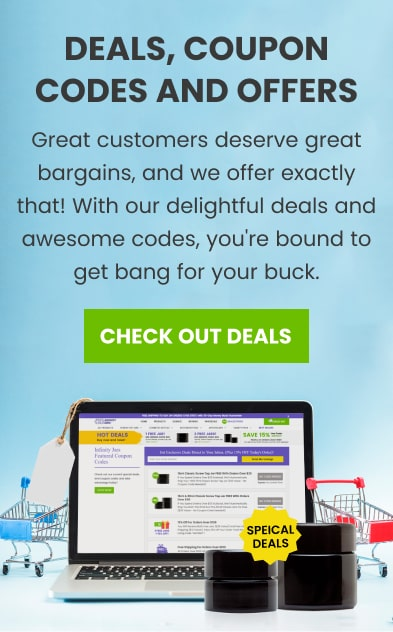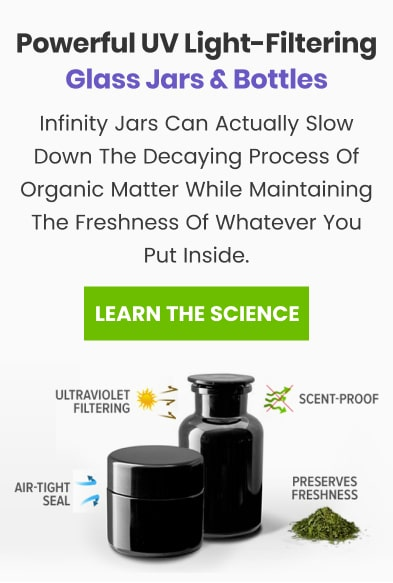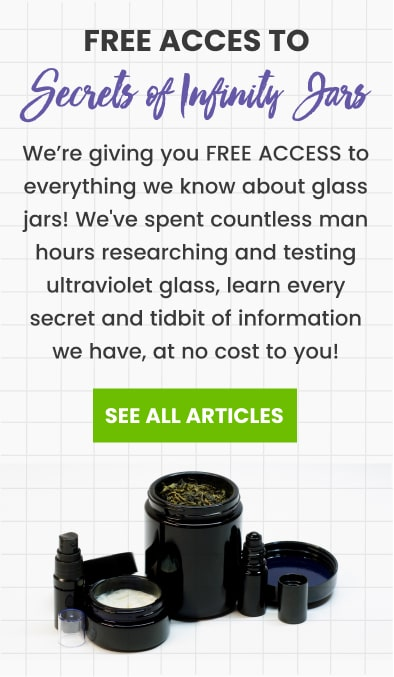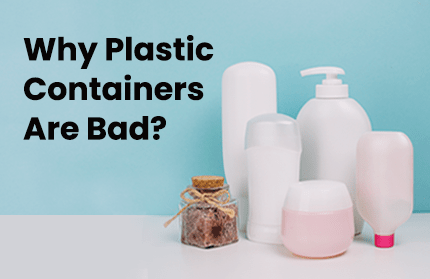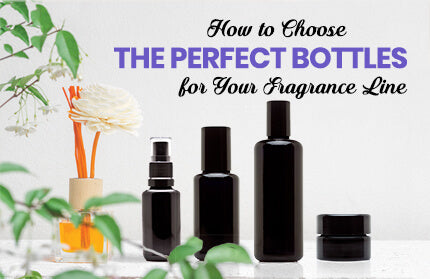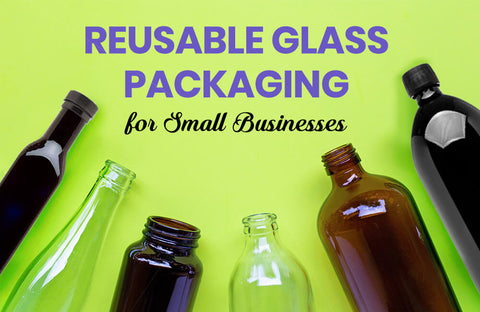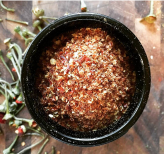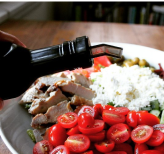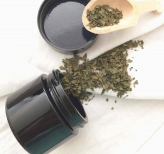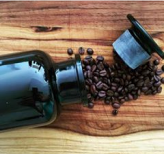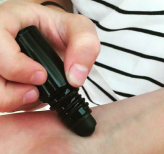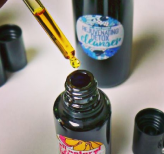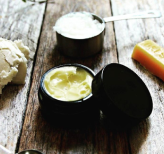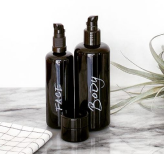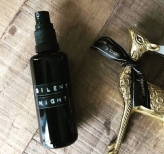
Reusable Glass Packaging for Small Businesses: Using the “Milkman Model”
Glass bottles can be safely reused as many as 50 times. There is thus a reason why many companies and manufacturers are planning on using reusable glass bottles as packaging again. Infinity Jars offers a wide variety of ultraviolet glass bottles and jars that are durable and guaranteed to keep your products safe from oxidation and other kinds of damage.
Recently, reusable glass packaging has begun seeing a sort of resurgence. Many manufacturing companies and popular brands have been ramping up efforts to be more “green,” and for good reason. Going green, of course, entails enacting changes in various practices, including rethinking the packaging that various products come in.
Many kinds of product packaging -- tubs, bottles, packs, casings -- are made of plastic. Plastic has become ubiquitous for many reasons, not the least of which is the fact that it’s cheap to produce. Additionally, it’s lightweight, so the products won’t weigh a lot and won’t be expensive to ship. However, a lot of plastic consumer product packaging and containers end up in the trash, making their way into landfills or even the seas and other bodies of water.
Thus, glass packaging is definitely worth looking into. Reusable packaging made of biodegradable materials can help not just your business and your customers, but the environment as well.
Glass Packaging: A History
Glass has had a very long history. In the Bronze Age, a number of civilizations developed glass bottles and vessels, though the techniques were comparatively primitive. Centuries later, in the 1st century BC, glassblowing was finally developed.
It wasn’t until the late 19th century AD, however, that glass-making and glassblowing techniques were refined. Eventually, glass bottles, glass jars, and other glass containers became widespread and used as packaging for various products.
Glass storage jars and other glass containers were eventually overtaken by plastic and metal containers, though of course glass is still widely used today. However, more and more people and businesses are looking towards glass as a replacement for plastics.
The Milkman Model
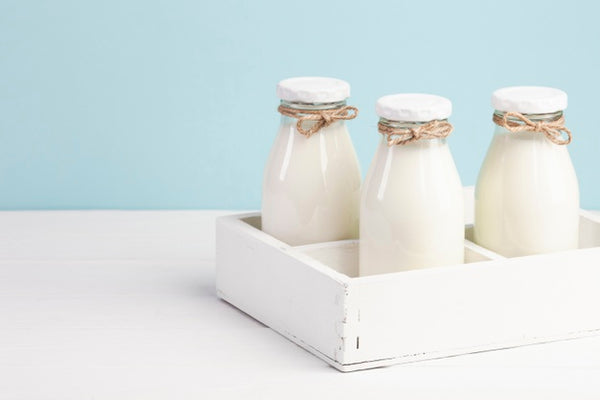
In the second half of the 19th century in Britain, milk from the countryside began to be delivered to cities in glass bottles. By the mid-20th century US, milkmen were delivering milk to people’s doorsteps as well. These households would then put empty bottles of milk out on their doorstep, which the milkmen would scoop up and reuse.
This arrangement is what people consider to be “the milkman model.” Consumer goods, which in this case are milk, are delivered to consumers in reusable glass containers.
If consumers bought bottled milk -- or other glass bottled beverages such as soda -- from a store or supermarket, they can put down a small “deposit” for the bottles. They can later return the empty bottles in exchange for a refund of that deposit.
The milkman model persisted for some time in the US and the UK, but it was eventually phased out. When milk began to be packaged in cartons and plastic containers, bottled milk made up only a very small percentage of milk sales. Plastics and cartons are often simply thrown away, or if they were reused, they were reused for other purposes and likely not for storing more milk.
Glass bottles, meanwhile, can be safely reused as many as 50 times. There is thus a reason why many companies and manufacturers are planning on returning to reusable glass bottles again. These businesses are also pushing to be more environmentally-friendly by helping cut down the waste that their products generate.
The Impact of Plastic Packaging
Single-use plastics are admittedly convenient -- use once, then throw them away. About 40% of all plastic products are meant to be single-use, and that amount of plastic can definitely add up. In fact, the production of plastic went from 2.3 million tons in the 1950s to 448 million tons by 2015. About 300 million tons of plastic end up as waste each year. Plastic pollution has thus become one of the most critical environmental issues in contemporary times.
While nearly half of all plastic products made are meant to be single-use, they are also made to be quite durable. Thus, they can take centuries to degrade. Most of these plastics end up in the oceans, where they remain. Additionally, even though plastic takes centuries to degrade, the sunlight, waves, and wind can break them down into microplastics.
Microplastics have now been found nearly everywhere on Earth, from the tallest peaks to the deepest ocean trenches. These microplastics have also been found in the stomachs of marine wildlife, some of which find their way to our dinner plates. Currently, scientists think that it is virtually impossible to round up and recover all microplastics, especially those in the sea.
Thus, plastic packaging has made quite an impact on the environment. There have been many efforts to prevent plastics from making their way into the oceans, including recycling, better waste management, lessening the amount of single-use plastics produced, better product design, and better packaging options.
These packaging options can include reusable glass packaging, which can help businesses ensure that their products will contribute very little to the world’s plastic waste problem.
The Return to Glass
The magnitude of plastic waste has prompted several brands, both big and small, to begin plans to phase out single-use plastic packaging. Companies like Unilever, PepsiCo, Procter & Gamble, Nestle, and more have sustained unfortunate reputations as some of the planet’s biggest plastic polluters. These companies -- producers of commonly used products such as deodorants, oats, cereals, shampoo, detergent, and ice cream -- plan on replacing plastic packaging with reusable steel, aluminum, and glass packaging.
Thus, it seems that there are big plans to return to the milkman model of reusable packaging. Conceivably, customers might have to put down a deposit for the bottles or cans, then return empties for a refund. Of course, a vital issue here is the cost. Single-use plastic packaging is still popular for a number of reasons, including the fact that it’s cheap and not costly to ship. There is a huge chance that a change in packaging might entail some changes in consumer behavior as well.
However, these changes in packaging will take some time. After all, these types of packaging are more costly, and these big companies seem to want to take their time before implementing new measures to see if they’ll work.
Newer and much smaller businesses, however, have a chance to smoothly incorporate reusable glass packaging in their designs. Infinity Jars, a brand that offers wholesale glass storage containers with lids, can help provide sturdy and reusable packaging for various products ranging from food to cosmetics. Not only are these glass containers durable and reusable, they’re also made of ultraviolet glass that can help extend the shelf life of organic and biodegradable products.
Choosing Glass Packaging
It’s easy to understand why glass is preferable to plastic, especially from the standpoint of environmentalism. However, there are reasons why plastic packaging is still very popular, not the least of which are the facts that it’s cheap to make, use, and transport.
However, there are definitely more benefits to using various glass products, such as glass storage jars and glass food storage containers. You might find that though glass may be more expensive upfront, you might actually save your business more money down the line by investing in reusable high-quality glass airtight storage containers.
If you choose glass jars or glass bottles to use in your business, you’ll be proactive in turning the tide away from people’s dependence on single-use plastics. Moving away from plastic packaging can be challenging at first, but it can be worth it to be on the forefront of reusable and more environmentally-friendly packaging.
Glass vs Plastic
It’s been made clear how plastic can be harmful in many ways. Millions of tons of plastic waste have made their way into the world’s oceans, and microplastics are polluting the entire world. Worse, they do not biodegrade and can remain present for hundreds of years.
Glass, meanwhile, is not only 100% biodegradable -- it’s 100% recyclable as well. In fact, 80% of recovered glass can be made into entirely new glass products, be they bottles, jars, ornaments, or others. Furthermore, you can take a glass jar and recycle it over and over. The recycled product will still be able to retain the same quality.
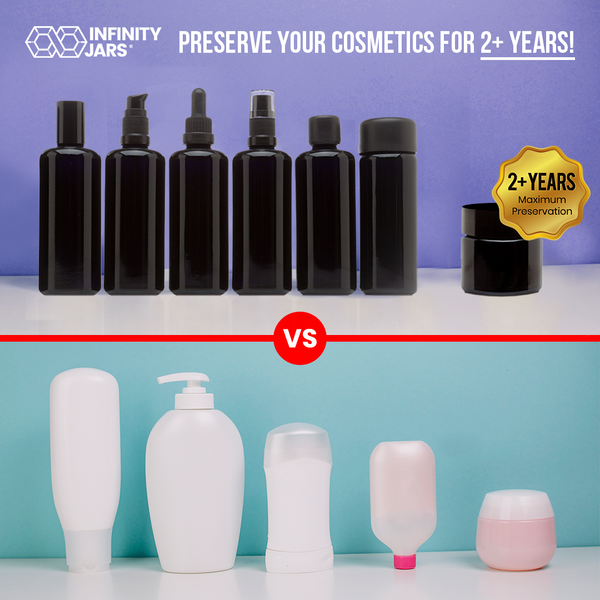
Plastic, on the other hand, can technically only be downcycled. For example, when you recycle a plastic tub, it won’t result in another plastic tub. The recycled plastic will likely be used to make other things.
Reusability is also no problem for glass. In situations in which recycling isn’t necessary, all you’ll need to do is to keep reusing the same glass product after washing and sterilizing it. Because it’s non-porous, it won’t affect the taste or quality of the products it holds.
Of course, plastic does have some edge over glass. For one thing, plastic is less expensive and takes less energy to produce. It also costs less to ship. The production of glass requires high temperatures, and the finished product is fragile and more prone to breakage than plastic. Thus, glass is more expensive to ship.
However, it’s worth remembering that because glass packaging can be reused, businesses won’t need to spend on a constant supply of new packaging.
Why Glass is Better
All in all, we can’t discount the advantages offered by plastics. It’s also worth noting that scientists are looking for ways to create plastics that are less harmful to the environment and are safer to use. Bioplastics -- plastics made from plants instead of fossil fuels -- are being developed, as well as plastics that can be completely biodegradable.
Of course, studies and developments like these can take years of research and testing. Glass storage containers with lids, however, are already available, widely used, proven to be safe to use, and 100% recyclable. Furthermore, glass has already been innovated in many ways. Just one example of this is the number of colors that glass can come in. These colors don’t just make glass bottles pretty to look at; they also affect the way that light penetrates through the glass.

We’re all familiar with clear glass, which is a very common iteration. However, you may have also noticed glass storage jars and bottles that come in amber, brown, blue, and green. While some of these colored containers are actually made of clear glass that’s been painted over, the glass itself can actually be colored and not just painted.
Thus, you’ll have a variety of choices as well when it comes to reusable glass packaging. Depending on the product you’re selling, certain glass types and colors may be more suitable for you. However, perhaps the most interesting type of glass to date is ultraviolet glass, which can prolong the shelf life of biodegradable products by protecting against the causes of product spoilage or oxidation.
The Benefits of UV Glass Packaging
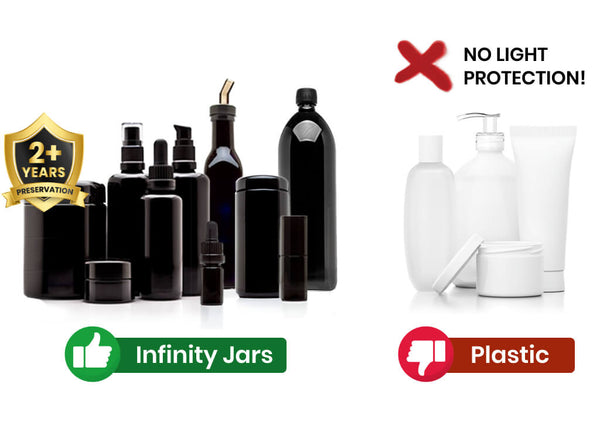
Glass comes in different colors, and every color makes the glass function differently. Clear, transparent glass allows visible light to come through, which means that it won’t be able to provide protection against the damaging effects of light on certain kinds of materials. Other colors, such as amber and green, are typically used for beverages such as beer and wine.
However, amber glass and other colored glass don’t block out as much light as ultraviolet glass can. UV glass is meant to block out visible light, which can help inhibit the growth of microbes that facilitate decay and degradation in biodegradable materials. This type of glass can make airtight storage containers that are designed to protect its contents not just from visible light rays, but from moisture, contaminants, and leaks as well.
Infinity Jars provides a wide variety of UV glass storage containers with lids. These containers are suitable for products such as small-batch cosmetics, craft beverages, essential oils, perfumes, gourmet food items, and more. Visible light rays can promote the proliferation of harmful microbes in these kinds of products, making clear glass containers less than optimal. However, UV glass blocks visible light rays, but lets in UV-A rays that can help stop the growth of microbes.
Thus, Infinity Jars’ UV glass storage containers with lids are highly suitable to be used as reusable packaging. Each product is made of thick, European-made glass that won’t easily crack or break. Even in rough transit, these jars and bottles are very likely to stay perfectly intact.
Buying Bulk
The one issue with glass is that it’s more expensive than plastic. However, if your business intends to utilize reusable glass packaging, then you might end up spending less in the long run. At the very least, you won’t have to keep ordering and purchasing new plastic containers for every batch of your product.
The option of buying glass airtight storage containers in bulk is a highly beneficial one. You can buy a large number of units at a considerable discount, and if you follow the reusable packaging model, these units will eventually find their way back to you.
Reusable packaging also keeps your customers more engaged than they typically would be, even after they’ve already bought a product from you. You can offer a refund for the jar or bottle deposit if a customer returns a unit, or you can also offer a coupon or a discount for the next purchase. You can also offer a prize of some sort for customers that return a certain number of empties. These strategies will allow you to sustain the “milkman model” for your own business while also allowing you to have more engagement and interaction with your customer base.
Fortunately, buying wholesale glass storage jars and bottles from Infinity Jars is simple. You can ask for a free quote and and get great discounts for every order. UV glass jars and bottles have proven to be reliable glass packaging options, and they’ll definitely be able to add value to your business.
References
- https://www.containerandpackaging.com/resources/glass-bottles-brief-history/
- https://www.nationalgeographic.com/environment/habitats/plastic-pollution/
- https://www.unenvironment.org/interactive/beat-plastic-pollution/
- https://www.sciencehistory.org/the-history-and-future-of-plastics
- http://www.gpi.org/learn-about-glass/benefits-glass-packaging
- https://www.forbes.com/sites/grrlscientist/2018/04/23/five-ways-that-plastics-harm-the-environment-and-one-way-they-may-help/#2db1a7eb67a0
- https://www.theatlantic.com/health/archive/2012/01/supermarket-packaging-the-shift-from-glass-to-aluminum-to-plastic/251875/
- https://fortune.com/2019/01/24/reusable-containers-loop-brands-milkman-model/
- https://www.reuters.com/article/us-davos-meeting-plasticpollution/big-brands-revisit-the-milkman-model-to-cut-plastic-pollution-idUSKCN1PI14Z



